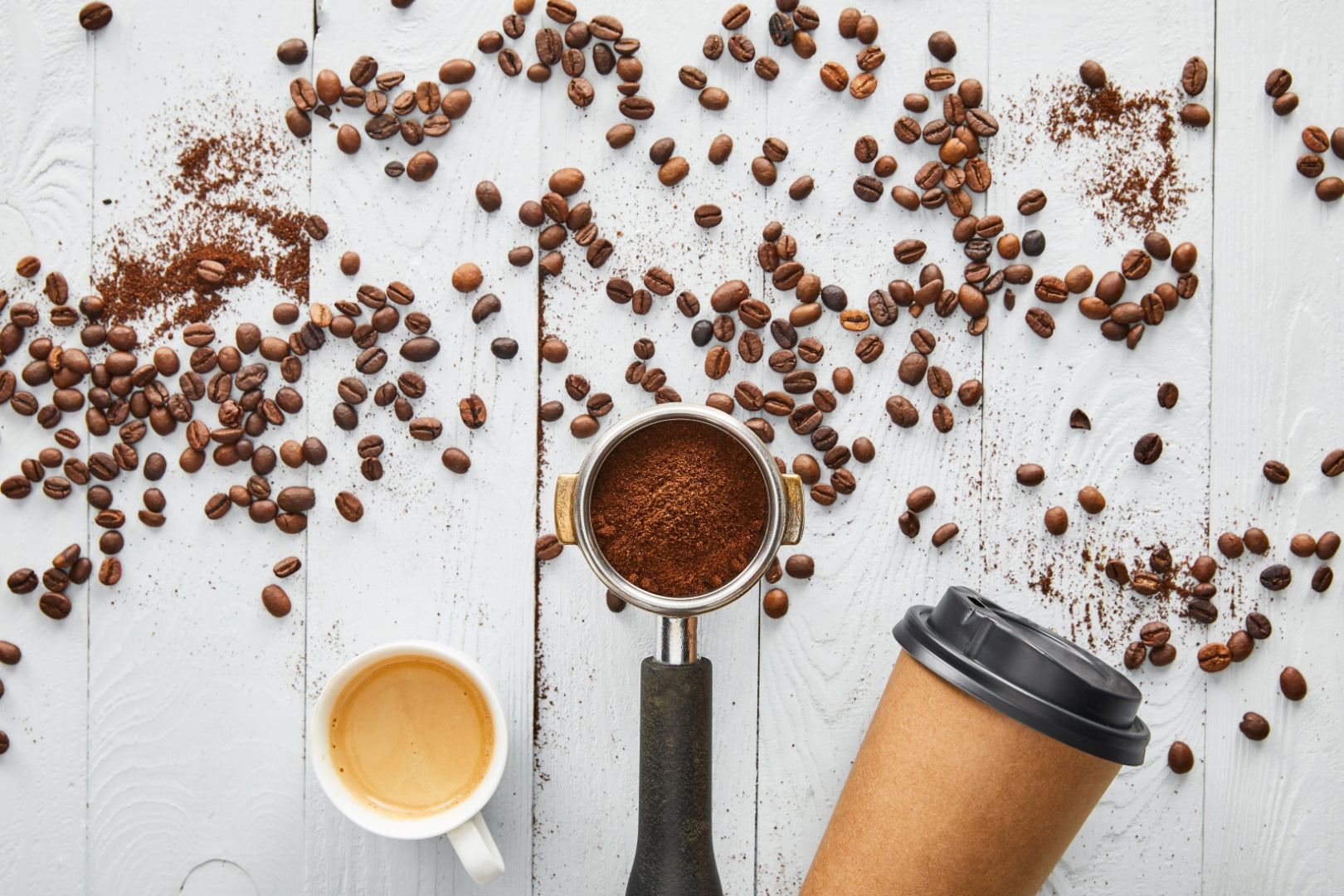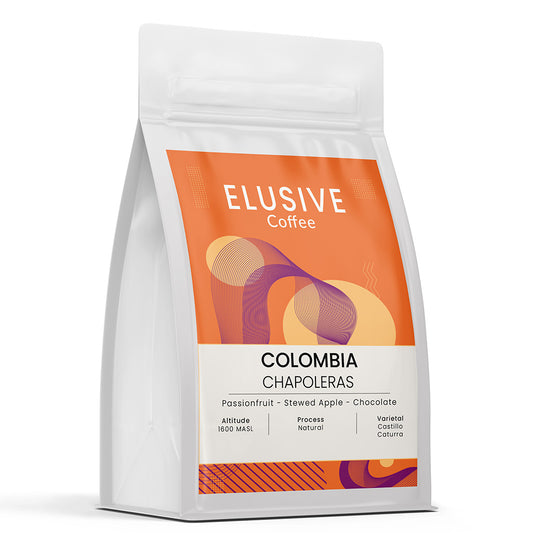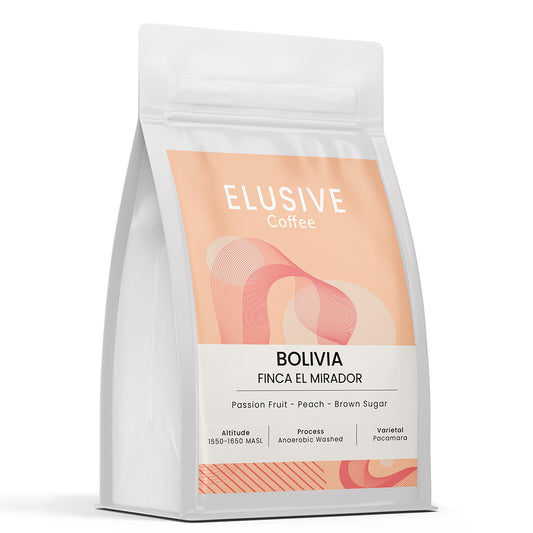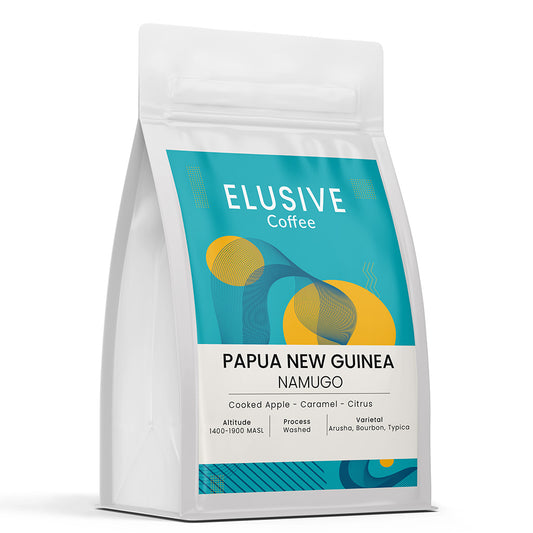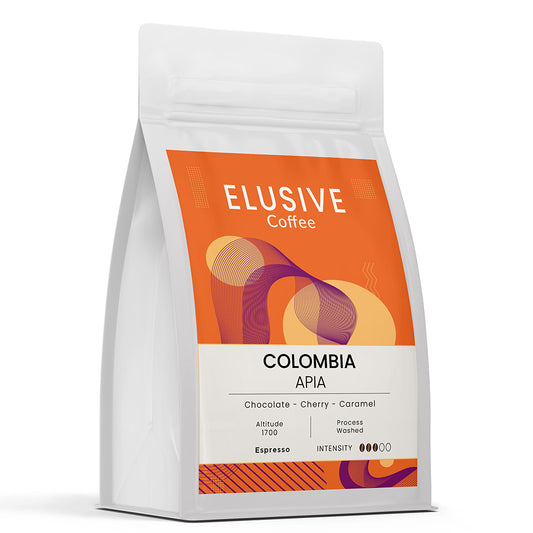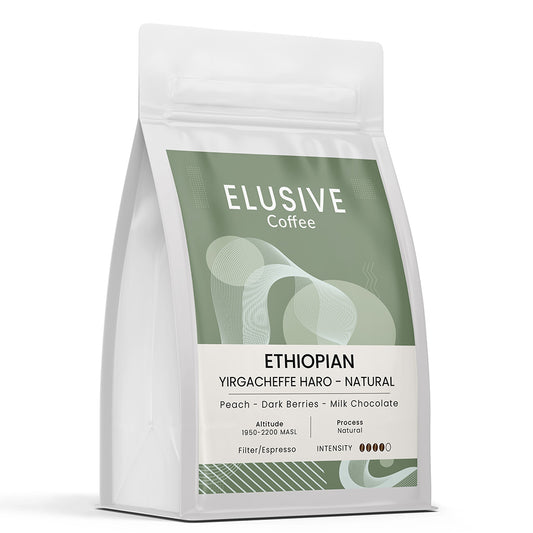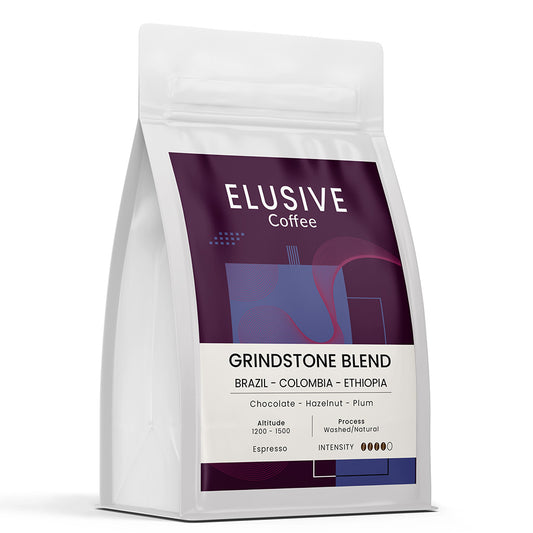
Share
In the quest for the ultimate cup of coffee, enthusiasts often obsess over bean origin, roast profile, grind size, and brewing temperature. However, the most abundant component of your brew—water—is frequently overlooked. Yet, water makes up over 98% of a typical filter coffee and approximately 95% of an espresso shot, making it not just an ingredient, but the very foundation of extraction. It acts as the solvent, responsible for unlocking and transporting the complex array of oils, acids, and aromatic compounds that define coffee's flavour profile. The chemical make-up of this solvent is not passive; it actively dictates the potential of your final cup. Even the finest, high-quality coffee beans cannot overcome the limitations imposed by chemically unsuitable water. Therefore, understanding and controlling the mineral content of your water is paramount to achieving consistent, repeatable, and truly exceptional coffee extraction. The goal isn't to use the "purest" water, but the optimal water – a carefully balanced solution engineered for complete and balanced extraction.

Beyond H₂O: Deconstructing Your Brewing Water
The water flowing from your tap or bottle is far more than just hydrogen and oxygen; it's a complex solution brimming with dissolved minerals, salts, and other compounds picked up during its journey through the earth and municipal treatment systems. While some components, like chlorine, are undesirable contaminants that impart a harsh, chemical taste and must be removed, others are essential for coffee extraction.
The science of coffee brewing water largely revolves around two critical groups of dissolved minerals: "hardness" minerals and "alkalinity" (or "buffer") minerals. The dynamic interplay between these two groups governs the effectiveness of flavour extraction and how those flavours are perceived. An imbalance in either direction can lead to disappointing results. Water with insufficient minerals will fail to extract enough flavour, resulting in a weak, sour, and uninteresting brew. Conversely, excessive mineral content can over-extract certain compounds or mute others, leading to a dull, chalky, or bitter cup.
The Hardness Ions: Calcium and Magnesium as Flavour Engines
The term "hardness" in water chemistry refers to the concentration of dissolved multivalent cations, predominantly calcium (Ca2+) and magnesium (Mg2+) ions. This combined concentration is known as General Hardness (GH). These positively charged ions are the primary drivers of flavour extraction. Coffee grounds contain numerous desirable flavour compounds, many of which are acidic and carry a negative charge. The positive charge of calcium and magnesium ions allows them to bond with these flavour molecules, effectively pulling them from the coffee grounds and into the water. Without sufficient hardness, water lacks the chemical "grip" needed to extract the full spectrum of flavours, leaving many trapped within the bean.
Calcium (Ca2+): The Architect of Body and Sweetness
Calcium is a powerful and prevalent ion that significantly shapes the tactile and foundational qualities of a coffee brew. Its primary contribution is to the body or mouthfeel, creating a fuller, more substantial, and creamier texture. Beyond texture, calcium significantly enhances the perception of sweetness, rounding out the flavour profile and softening sharp edges. Uniquely, calcium has been observed to accentuate red, pink, and purple fruit notes, bringing out flavours like strawberry, raspberry, cherry, or plum. However, balance is crucial; excessive calcium can lead to a heavy, dull brew with a dry, chalky texture, muting overall vibrancy.
Magnesium (Mg2+): The Catalyst for Brightness and Complexity
Magnesium acts as a potent flavour enhancer, responsible for a brighter, more vibrant, and dynamic cup. It is particularly effective at accentuating citrus (orange, lime), tropical (mango, papaya), and stone fruit (peach, apricot) flavours. Magnesium tends to positively elevate a coffee's perceived acidity, creating a lively, crisp, and refreshing quality that makes the cup feel more dynamic. This brightness often results in a cleaner finish and a more inviting aftertaste. Like calcium, moderation is key; too much magnesium can introduce unwanted bitterness, a distinct salty taste, or a sensation of dryness.
The differing sensory impacts of these two ions highlight a crucial point: two water samples with identical General Hardness (GH) can produce vastly different-tasting coffees if their internal ratio of magnesium to calcium differs. A study showed that a lower magnesium-to-calcium ratio (1:3) significantly increased perceived astringency and bitterness while reducing fruitiness. This means the Mg/Ca ratio is a powerful, yet often overlooked, variable. Brewers can "sculpt" water's extractive properties; for example, a higher-magnesium water might accentuate bright, citrusy notes in a washed Ethiopian coffee, while a higher-calcium water could boost body and deep fruit sweetness in a natural-processed Brazilian coffee. This is a shift from a defensive to an offensive approach in water chemistry.

The Acidity Regulator: The Critical Role of Alkalinity (Bicarbonate Buffer)
If hardness ions are the engine of extraction, alkalinity is the steering and braking system. Alkalinity measures water's capacity to neutralize acid, known as "buffering". In brewing water, this capacity primarily comes from bicarbonate ions (HCO₃⁻). Coffee is naturally acidic, and these acids are extracted into the water during brewing. The bicarbonate ions in the water react with these coffee acids, tempering their intensity and preventing the final cup from tasting excessively sharp or sour. Many experts consider alkalinity to be the single most important factor in how water chemistry affects coffee taste.
The balance of alkalinity is critical and defines the character of the brew:
- Insufficient Alkalinity: Water with very low alkalinity has minimal buffering capacity, leaving extracted coffee acids unchecked. This results in an unpleasantly sharp, sour, and thin-bodied cup.
- Excessive Alkalinity: Water with very high alkalinity has too much buffering capacity. It over-neutralizes not only harsh acids but also the desirable, bright, and fruity acids that give specialty coffee its complexity. This leads to a flat, dull, heavy, and often chalky or muddy cup.
A common point of confusion is the relationship between alkalinity and pH. While related, they are not the same, and for coffee brewing, alkalinity is vastly more important. The pH of a solution measures its current state of acidity or basicity, while alkalinity measures its resistance to a change in that state when acid is added. The impact of alkalinity on the final acidity of brewed coffee is hundreds of times higher than that of the water's starting pH. This is because the coffee grounds themselves introduce significant acid, overwhelmingly dictating the final beverage's pH. The water's starting pH (e.g., 6.5 vs. 7.5) is a minor variable. Alkalinity, however, determines the water's *capacity to absorb and neutralize* those incoming coffee acids. Therefore, a brewer's focus should be on measuring and managing alkalinity, not starting pH, to achieve the desired brightness and acidity.
Defining the Terms: GH, KH, TDS, and pH Explained
To navigate the world of coffee water, a clear understanding of its core terminology is essential:
- General Hardness (GH): Measures the concentration of dissolved mineral ions, primarily Calcium (Ca2+) and Magnesium (Mg2+). It is the primary driver of flavour extraction and is typically expressed in "parts per million as calcium carbonate" (ppm as CaCO₃).
- Carbonate Hardness (KH) / Alkalinity: Measures the water's buffering capacity from carbonate and bicarbonate ions. It regulates perceived acidity in the final cup. In most natural water sources suitable for coffee, KH and Total Alkalinity are functionally synonymous and expressed in ppm as CaCO₃.
- Total Dissolved Solids (TDS): A gross measurement of the total mass of all dissolved substances, including minerals, salts, and other compounds. Expressed in parts per million (ppm), equivalent to milligrams per litre (mg/L). While useful for a quick snapshot, it’s a blunt instrument; two samples with 150 ppm TDS could have vastly different GH and KH levels, yielding different coffees.
- Potential Hydrogen (pH): Measures the acidity or basicity of an aqueous solution on a logarithmic scale from 0 (highly acidic) to 14 (highly basic), with 7 being neutral. As established, coffee is acidic (around pH 5), so the brew water's starting pH has minimal impact on flavour compared to alkalinity's significant effect.
The Global Standard: Ideal Water Composition According to the SCA
To promote quality and consistency globally, the Specialty Coffee Association (SCA) has developed standards for brewing water. These standards, based on scientific research and sensory analysis, provide a "core zone" for brewers to target, ensuring water is clean, safe, and chemically optimised for high-quality extraction. A fundamental requirement is that the water must be clean, clear, odour-free, and most notably, contain zero chlorine, as this disinfectant imparts a harsh, medicinal flavour.
The SCA standards outline acceptable ranges and specific targets:
| Parameter | SCA Target | SCA Acceptable Range |
|---|---|---|
| Chlorine | 0 mg/L | 0 mg/L |
| TDS | 150 mg/L (ppm) | 75−250 mg/L (ppm) |
| Total Hardness | 51−68 mg/L (ppm) | 50−175 mg/L (ppm) |
| Total Alkalinity | 40 mg/L (ppm) | 40−75 mg/L (ppm) |
| pH | 7.0 | 6.5−7.5 |
All hardness and alkalinity values are expressed as ppm as CaCO₃ for standardization.
A critical examination reveals an important nuance: the SCA provides "targets" and broad "acceptable ranges". This implies that the ideal point within that range is not fixed but is context-dependent. Factors include the coffee's origin, processing method (washed, natural, etc.), roast level, and brewing method. For instance, darker roasts (lower acidity) may benefit from softer water (lower hardness and alkalinity) to avoid a flat taste, while lighter, higher-acidity roasts can be enhanced by harder water. A very bright Kenyan coffee might excel with alkalinity at the higher end (e.g., 70 ppm), while a delicate Panamanian Gesha might shine with alkalinity at the lower end (40 ppm). Therefore, the SCA standards should be viewed as a "safe and ideal brewing zone"—a starting line for refinement, not the finish line.
Method-Specific Water Formulation: From Pour-Over to Espresso
While SCA standards offer an excellent all-purpose target, optimising extraction for different brewing methods demands a more nuanced approach. The physics of water-coffee interaction—specifically brew ratio and contact time—changes dramatically between methods, necessitating adjustments to water chemistry for best results.
The Pursuit of Clarity: Water for Pour-Over (V60 & General Filter Coffee)
Percolation methods like the Hario V60 aim for exceptional flavour clarity, highlighting nuanced aromatics and delicate acidity. The high water-to-coffee ratio (typically 1:16 to 1:18) means a substantial amount of minerals are introduced. Pour-over coffee is highly sensitive to alkalinity; even moderately high alkalinity can easily overwhelm bright, desirable acids, leading to a flat cup. Therefore, a lower alkalinity (typically 30-50 ppm) is preferred to preserve vibrant character. Softer water is generally recommended, allowing delicate flavours to express themselves without being muddied.
Ideal Profile for V60/Filter Coffee:
- Total Hardness (GH): 50−90 ppm as CaCO₃
- Alkalinity (KH): 30−50 ppm as CaCO₃
- TDS: 75−150 ppm
Balancing Intensity and Machine Health: Water for Espresso
Espresso is a highly concentrated beverage, brewed with a very low water-to-coffee ratio (e.g., 1:2) under immense pressure. This creates incredible intensity, and water chemistry goals must adapt, primarily focusing on balancing intensity for flavour and protecting expensive machinery from damage.
The low brew ratio means coffee acids are highly concentrated in the final shot. To prevent overwhelming sourness, a higher alkalinity level (up to 150 ppm) is often required compared to filter coffee. However, this leads directly to the central challenge: scale. High temperatures, calcium hardness, and alkalinity combine to precipitate calcium carbonate (limescale), which insulates heating elements, clogs tubes, and can lead to costly equipment failure.
This creates a conflict between flavour and machine longevity. Using pure, demineralised water (distilled or reverse osmosis) prevents scale but is aggressive, corrosive, and lacks minerals for proper extraction, resulting in bland, under-extracted shots. The espresso brewer faces a strategic compromise: use flavour-optimal water and commit to rigorous descaling, or prioritise machine health with "safer" water. Options for safer water include using magnesium sulfate (less prone to scale) or ion-exchange systems (e.g., BWT), which swap scale-forming calcium for more soluble magnesium. A known scale-free recipe, "Rpavlis water," uses only potassium bicarbonate for alkalinity, eliminating scale risk but requiring corrosion monitoring.
Ideal Profile for Espresso:
- Total Hardness (GH): 50−80 ppm as CaCO₃
- Alkalinity (KH): 40−80 ppm as CaCO₃ (can be higher for bright coffees if scale risk is accepted)
- TDS: 90−150 ppm
The Versatile Brewer: Water for the AeroPress
The AeroPress is a hybrid method, combining full immersion with pressure-driven filtration, offering versatility for different coffee styles, from concentrated shots to filter-style cups. Consequently, there is no single "ideal" water profile; it depends entirely on the recipe's goal.
- For Concentrated/Bypass Recipes: Extraction dynamics are closer to espresso, benefiting from higher alkalinity to balance intense acidity.
- For Full-Volume/Immersion Recipes: Dynamics are closer to pour-over, benefiting from lower alkalinity to preserve delicate acidity and nuance.
For a versatile, all-purpose AeroPress water, the SCA core standard is an excellent starting point. A World AeroPress Championship recipe recommends 100 ppm hardness as an example of a balanced foundation. From this point, brewers can adjust alkalinity and hardness based on the specific coffee style they wish to create.
Ideal Profile for AeroPress (Versatile Starting Point):
- Total Hardness (GH): 60−80 ppm as CaCO₃
- Alkalinity (KH): 40−50 ppm as CaCO₃
- TDS: 100−150 ppm
The Home Barista's Water Laboratory: A Practical Guide to Testing and Creation
With theoretical understanding, home brewers can take practical control. This involves two key steps: assessing your starting water and then building custom water profiles.
Assessing Your Starting Point: How to Test Your Tap Water
Before any adjustments, establishing a baseline by analysing your local tap water is crucial.
- Municipal Water Reports: Search online for your city’s latest water quality report for general understanding of hardness, alkalinity, pH, and other substances.
-
At-Home Testing: For precise, real-time data:
- TDS Meters: Inexpensive, easy to use, measure electrical conductivity for estimated Total Dissolved Solids (TDS). Invaluable for verifying distilled/RO water purity (should read near 0 ppm) and monitoring consistency.
- Test Strips: Simple paper or plastic strips for rough GH and KH estimates. Convenient and affordable, but low precision makes them suitable for general assessment, not fine-tuning.
- Liquid Titration Kits: Commonly for aquariums, offer significant accuracy improvement. Involve adding reagent drop-by-drop to a sample until a colour change occurs, corresponding to hardness or alkalinity. Precision can be improved with techniques like "stretched titration".
- Digital Colorimeters/Photometers: The gold standard for home-testing accuracy. These devices measure exact colour changes digitally, providing precise numerical readings. A greater financial investment, but eliminate guesswork and provide near-laboratory-grade results.
Here's a comparison of common home testing methods:
| Method | What It Measures | Accuracy | Ease of Use | Approx. Cost |
|---|---|---|---|---|
| TDS Meter | Total Dissolved Solids (estimated) | Low (for composition) | Very Easy | £15 - £30 |
| Test Strips | GH & KH (approximate) | Low | Very Easy | £5 - £15 |
| Titration Kits | GH & KH | Moderate to High (with technique) | Moderate | £15 - £30 |
| Digital Colorimeter | KH or GH (specific) | Very High | Easy | £70 - £200+ |

From Scratch: Creating Custom Coffee Water
The most reliable and repeatable method for consistently ideal brew water is to build it from a blank slate. This means starting with purified water—distilled water or water from a Reverse Osmosis (RO) system—which has a TDS near zero, then adding precise amounts of specific minerals. This removes all variability and unknown contaminants from tap water.
Essential Ingredients:
- Base Water: Distilled water or RO water, readily available at most grocery stores.
- Hardness Source (GH): The most common, accessible, and food-safe ingredient for magnesium hardness is Epsom Salt (Magnesium Sulfate, MgSO₄). For experimenting with calcium, food-grade Calcium Chloride (CaCl₂) can also be used.
- Alkalinity Source (KH): The universal standard for bicarbonate buffer is Baking Soda (Sodium Bicarbonate, NaHCO₃). Ensure it's pure baking soda, not baking powder. For certain scale-free espresso recipes, Potassium Bicarbonate (KHCO₃) is an alternative.
The Concentrate Method (Step-by-Step Guide):
Adding minuscule amounts of dry minerals directly to large water volumes is prone to measurement error. A far more accurate and convenient method is to create concentrated mineral solutions first, which can then be precisely measured for final brew water batches.
- Procure Ingredients and Equipment: Obtain distilled or RO water, food-grade Epsom salt, and pure baking soda. A digital scale with 0.01g accuracy is essential, along with two clean, 1-litre glass or plastic bottles for concentrates.
-
Prepare Concentrates: Using the precision scale, create two separate 1-litre concentrate solutions:
- Alkalinity (KH) Concentrate: Add exactly 1.68g of baking soda (NaHCO₃) to 1 litre of distilled water. Shake until fully dissolved.
- Hardness (GH) Concentrate: Add exactly 2.45g of Epsom salt (MgSO₄) to 1 litre of distilled water. Shake thoroughly until dissolved.
- Label Clearly: Critically important to label bottles accurately (e.g., "ALKALINITY / BUFFER (KH)" and "HARDNESS / MAGNESIUM (GH)"). Store concentrates in a cool, dark place or refrigerator.
-
Mix Final Brew Water: To create a batch of brew water, use the precision scale to measure amounts of each concentrate into a larger container of distilled water. For example, to create 1 litre of water following the SCA Standard recipe, combine:
- 40.1g of the Alkalinity (KH) concentrate
- 68.6g of the Hardness (GH) concentrate
- 891.3g of fresh distilled water (to make a total of 1000g, or 1 litre)
This method provides unparalleled precision and repeatability, allowing brewers to confidently create any desired water profile.
Proven Recipes for Perfect Extraction
The following table provides "cookbook" DIY water recipes from leading industry experts, designed for the concentrate method. These offer excellent starting points for experimentation, each formulated for specific mineral balance and sensory outcomes.
| Recipe Name | Target GH (ppm) | Target KH (ppm) | Grams of GH Concentrate per Liter | Grams of KH Concentrate per Liter | Tasting Notes / Best For |
|---|---|---|---|---|---|
| SCA Standard | ~69 | ~40 | 68.6g | 40.1g | Balanced, all-purpose starting point. Excellent for cupping and general filter brewing. |
| Scott Rao | ~76 | ~50 | 75.7g | 50.1g | Slightly more buffer and hardness. Aims for a rich, balanced, and flavorful filter brew. |
| Melbourne Water | ~24 | ~12 | 23.7g | 11.5g | Very soft water. Ideal for long filter brews or highlighting delicate notes in very light roasts. |
| Hendon Water | ~100 | ~31 | 99.9g | 30.8g | Higher hardness, lower buffer. Designed to maximise the extraction of bright, fruity flavours. |
| "Rpavlis" Espresso | 0 | ~50 | 0g | (Uses 0.1g Potassium Bicarbonate per litre, not a concentrate) | A completely scale-free espresso water. Tames acidity but offers no mineral extraction power. |
Conclusion: Water as the Final, Controllable Variable
The exploration of coffee water chemistry reveals it as one of the most impactful, yet frequently neglected, variables in brewing. While grind size, brew ratio, and temperature are rightly scrutinised, they all operate within the chemical environment created by water. Water is not a static ingredient but a dynamic solvent whose composition can be precisely engineered to achieve specific sensory outcomes.
The fundamental principles are clear: hardness minerals (magnesium and calcium) are the engines of extraction, pulling desirable flavour compounds from coffee grounds. Alkalinity (bicarbonate) acts as the crucial buffer, regulating the final acidity of the cup and preventing harsh, sour results. The balance between these two forces, tailored to the specific demands of the brewing method—be it the clarity-focused V60, the intense and machine-sensitive world of espresso, or the versatile AeroPress—is the key to unlocking a coffee's full potential.
For the dedicated prosumer, this knowledge transforms water from an unknown variable into a powerful, controllable tool. The path to mastery is practical: first, assess your starting water using accessible testing methods, and second, embrace the precision of building custom water from a pure base using simple, food-safe minerals. The provided recipes serve not as rigid rules but as scientifically-grounded starting points for personal exploration. By understanding the distinct roles of each mineral and managing the critical balance of hardness and alkalinity, you can move beyond simply making good coffee and consistently create truly exceptional coffee. Water chemistry is often the final frontier for many in their pursuit of the perfect cup, and mastering it offers the ultimate control over that delicious result. We encourage you to experiment within these established frameworks, to taste, to adjust, and to discover the perfect liquid medium for every bean.

